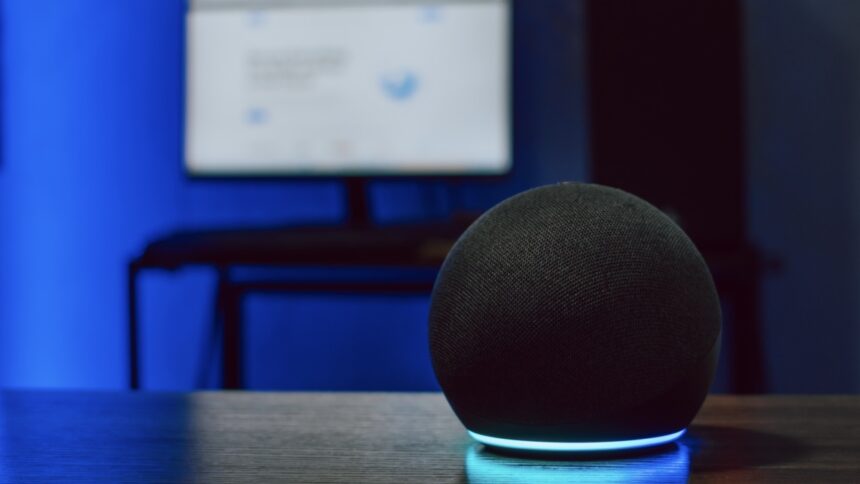The Future is Smart: Navigating Privacy in a High-Tech Home
While it may not feel like we’ve stepped into the world of The Jetsons with robotic help and airborne vehicles, modern technology has certainly paved the way for turning ordinary residences into next-generation smart homes. There are numerous reasons to embrace this evolution including greater environmental control, enhanced automation for everyday tasks, and heightened security measures.
However, the integration of smart technology into homes comes with a significant challenge: privacy concerns. Smart devices rely on network connectivity to function, which means that every gadget within your home—from door locks to smart bulbs—could become a target in the quest to safeguard your personal information. It’s not just external threats; often, the companies that manufacture these gadgets are the worst culprits, collecting vast amounts of data in order to sell it off to third parties.
Fortunately, achieving the benefits of a smart home without compromising on privacy is entirely possible with some careful planning.
Careful Consideration
First and foremost, it’s essential to acknowledge that the simplest way to avoid privacy pitfalls is to opt out of smart technology altogether. No method can fully secure your privacy against the risks associated with these devices; thus, one straightforward approach is to maintain a “dumb” home.
A balanced alternative is to assess which smart features are genuinely beneficial to your lifestyle. Rather than thoughtlessly adopting every available gadget, concentrate on the features that will truly enhance your family’s day-to-day life. For example, do smart light bulbs that adjust color and temperature throughout the day significantly improve your experience? If the answer is no, avoiding installation can help minimize your privacy risks.
Intelligent Shopping
If you determine that certain smart devices would offer genuine advantages, it’s crucial to proceed with caution in selecting specific products. This involves conducting thorough research to find the best options available—and resisting the temptation to purchase inferior products at enticingly low prices. While these lower-tier devices might perform basic functions adequately (at least for a while), they are usually the riskiest choices when it comes to privacy and security. Frequently, the reduced cost may be a trade-off for the extensive data you are unknowingly sharing with these companies. If safeguarding your personal data is a priority, be prepared to invest a little more.
For instance, when looking for a smart vacuum, you might want to refer to our buying guide highlighting options based on firsthand experiences. Similarly, if you’re interested in smart lighting solutions, check out the buying guide on PCMag.
Strengthen Security
A smart home comprises two main elements: the devices themselves and the network that connects them. Ensuring that both aspects are secure is essential for protecting your privacy:
-
Adjust Router Settings: Avoid using the default SSID (Wi-Fi network name) and default password. Implement a strong password and enable robust encryption—WPA3 is preferable, while WPA2 should be the minimum (consider upgrading to a router with WPA3 capability for enhanced privacy).
-
Establish Separate Networks: Most routers allow you to create a separate “guest” network. Utilize this for your smart devices. This keeps them functional, while reducing the risk of a privacy breach by isolating them from your main network, where your more sensitive devices, like laptops and phones, are connected.
-
Unique Passwords and Two-Step Verification: Each smart device typically operates through its own application, which often requires a password and has its own security protocols. Avoid using identical passwords across devices, and enable two-factor authentication (2FA) whenever possible, as this provides an additional layer of security for your data.
Review Device Settings
Even with a secure network, every individual device features settings that can affect your privacy. Familiarize yourself with each device’s options—look for ambiguous terms like “data” and “personalization,” particularly regarding advertisements. Setting these options to the most restrictive settings can go a long way in protecting your privacy.
For instance, if you own a Google Nest smart speaker, adjust privacy settings through the Google Home application by navigating to Settings > Privacy > Your Data in the Assistant. Disable options such as Personalized ads and Audio recordings to protect your information from being stored.
Exploring device settings is crucial; take the ecobee smart thermostat, for example, which features a Smart Home/Away option that tracks your phone’s location to adjust temperature settings. If you prefer not to have your location monitored, navigate to Settings > eco+ menu and disable this feature.
Stay Updated
Cybercriminals are constantly searching for vulnerabilities in smart device security. Reputable manufacturers continually provide updates to enhance software and firmware security, but these updates may not happen automatically.
If there’s an option for automatic updates on your smart device, enable it. Nevertheless, regularly check to ensure updates are indeed happening, including firmware updates, which may be more complex than simple downloads. Staying abreast of updates will mitigate privacy risks.
Update procedures often vary by device, but they are typically accessible through the respective app. Many devices will update automatically; for example, if you have an August Home Smart Lock, you might receive notifications about firmware updates as it connects via Bluetooth. Always prioritize these updates—for they typically take just a few minutes.
Sometimes, manual intervention may be necessary to prompt updates. For example, saying “Alexa, update your software” to your Amazon Echo may suffice. Otherwise, explore the settings to find update options. For devices like the Blink Outdoor cameras for security, navigate to each camera’s section in the app, select Settings, and then scroll to Update Firmware.
Ensure Physical Security
Finally, it is essential to remember that not all security threats are digital. To keep your data safe, ensure that smart devices are not easily accessible physically. This concern primarily pertains to devices installed externally or those that can be accessed from outside your home. A malicious individual might gain access to the interior of your home to tamper with your devices, so always consider physical security when inviting unfamiliar individuals inside.
Additionally, remember that smartphones and tablets serve as primary access points for controlling your smart home features and privacy settings. Securing these devices with a robust PIN or biometric authentication is vital to prevent unauthorized access to your sensitive information.












